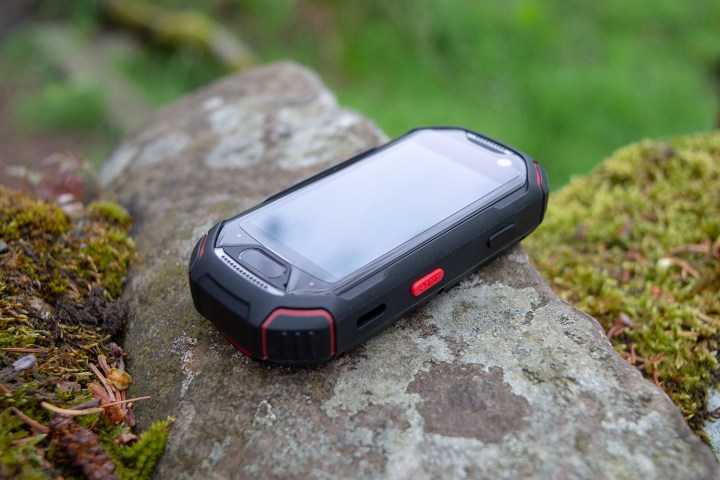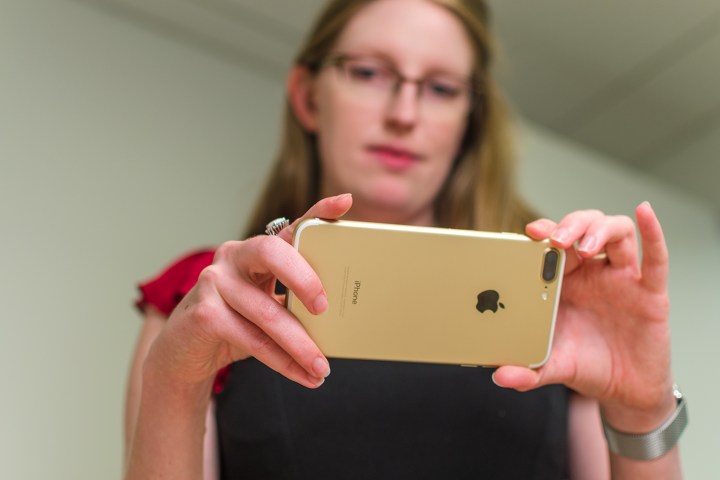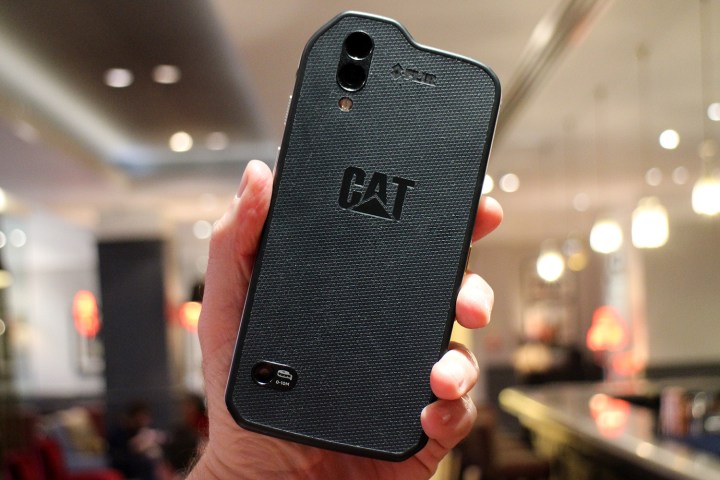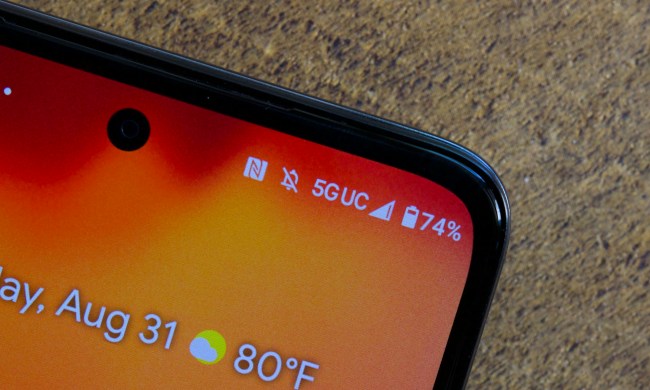Most flagship phones these days boast some level of water resistance, and you’ll find “IP ratings” on everything from the Apple iPhone 16 to the Samsung Galaxy S24 Ultra. But that got us wondering: Just what do manufacturers mean when they use terms like “waterproof” and “water-resistant?” What constitutes a “rugged” device? Just how many times can you drop your phone in the toilet before you can expect it to bite the dust?
As it turns out, some terms that describe a phone’s ruggedness are actually standardized, and there’s a whole lot more to them than meets the eye. IP ratings measure a device’s resistance to water, dust, and other particles, while military specs describe structural integrity. Some certifications are a little less precise than others, but taken together, they give a rough idea of how the best waterproof smartphones will hold up against the elements.
Here’s everything you need to know about IP ratings — and as a bonus, we’re throwing in in formation about MIL-STD certifications for physical damage, too.
The ratings behind a ‘rugged’ product

“Rugged” is just a word, a marketing ploy as meaningless as “summer-proof,” “water-resistant,” or “dustproof.” All make nice bullet points on a phone’s spec sheet, but they aren’t all that descriptive — “rugged” and “water-resistant” devices can short just as easily as “non-rugged” devices when they fall into water (as well as shatter when they hit concrete).
A certification is something completely different. When a phone has a certified rating of some sort, a third party has conducted tests to ensure that it can survive conditions like hard falls, dusty shelves, extreme heat, certain kinds of radiation, and deep pools of water.
Phone, tablet, and PC manufacturers measure the ruggedness of devices using two systems of standards: The Ingress Protection (IP) rating, published by the International Electrotechnical Commission; and the Military Specification or Military Standard (MIL-STD), which is developed by arms of the U.S. Military and Department of Defense.
Ingress Protection rating

A smartphone’s IP rating is determined by how well it holds up against dirt, dust, and water. Ratings range from 1 to 6 for dust and dirt and 1 to 9 for water, with the first and second digits in the rating indicating how well it withstands exposure to solid particles and liquids, respectively. The maximum rating for solid objects, IP6, means it lets in very little dust and dirt, and a water-resistance rating of 8 indicates it can be submerged in water for minutes at a time. A phone with those specs would earn an IP68 rating.
To make matters more complicated, a high IP rating doesn’t necessarily mean dust, water, or debris won’t enter a phone’s enclosure. Rather, it indicates that when dust and water do make their way through a phone’s seams, they won’t enter in sufficient quantities to cause malfunction. So the IP67-rated iPhone SE will not be as resistant to water entry as the IP68-rated iPhone 16 Pro, even though both phones will come out of the pool just as wet.
However, IP ratings are not all-encompassing, and phones need not pass every lower test to snag a higher rating. For example, for a smartphone to nab the coveted IP68 certification, it has to pass the tests for IPX7 and 8 — but is not required to test for water jets on the IPX5 and 6 levels.
That’s the reason you sometimes see a smartphone with multiple IP ratings. The Sony Xperia 1 IV is rated both IP65 and IP68, which signifies it’s resistant to total immersion and high-pressure water jets. However, as you might expect from us continuing to use a very old phone as an example, such practice has become very rare. Most companies default to IP68 and leave it there.
Here’s a breakdown of the ratings for solid foreign objects.
| Level | Object size it protects against | Effective against |
| 0 | Not protected | No protection against solid objects |
| 1 | >50mm | Protection against large surfaces like the back of the hand |
| 2 | >12.5mm | Protection against finger-sized objects |
| 3 | >2.5mm | Protection against thick wires and similar objects |
| 4 | >1mm | Protection against wires, screws, etc. |
| 5 | Dust-protected | Some protection against dust, and complete protection against contact |
| 6 | Dust-tight | Complete protection against dust and contact |
There’s a separate chart for water ratings. Note they’re described in terms of “water nozzles” and “jets” — a manufacturer like Samsung, Apple, or Google can choose to expose their phone to high-pressure blasts of water from an industrial hose and see how it fares over time.
| Level | Object size it protects against | Effective against |
| 0 | Not protected | Nothing |
| 1 | Dripping water | Protection against 10 minutes of dripping water |
| 2 | Dripping water when tilted up to 15 degrees | Protection against 10 minutes of dripping water when tilted 15 degrees from normal position |
| 3 | Spraying water | Protection against 5 minutes of spraying water at any angle up to 60 degrees from the vertical |
| 4 | Splashing water | Protection against 5 minutes of splashing water |
| 5 | Water jets | Protected against at least 3 minutes of water spraying from a 6.3mm nozzle from any direction |
| 6 | Powerful water jets | Protection against at least 3 minutes of water spraying from a powerful nozzle (12.5mm) from any direction |
| 7 | Immersion up to 1 meter | Protection against 30 minutes of water up to 1 meter of submersion |
| 8 | Immersion beyond 1 meter | Protection against continuous immersion in water up to depth specified by the manufacturer |
| 9 | High-pressure, close-range jets |
Protection against continuous high-pressure, close-range jets of water from any direction — including high-temperature steam jets |
Here’s a list of some devices (and a case) with a detailed description of what you can expect from them in terms of water and dust resistance:
| Phone | IP rating | Effective against |
| Apple iPhone SE | IP67 | Complete protection against dust and contact; protection against 30 minutes of water up to 1 meter of submersion |
| Samsung Galaxy S24 Ultra | IP68 | Complete protection against dust and contact; protection against continuous immersion in water up to depth specified by the manufacturer |
| Sony Xperia 1 IV | IP68/IP65 | Complete protection against dust and contact; protection against continuous immersion in water up to depth specified by the manufacturer; protected against at least 3 minutes of water spraying from a 6.3mm nozzle from any direction |
| Caterpillar CAT S61 | IP68/IP69 | Complete protection against dust and contact; protection against continuous immersion in water up to depth specified by the manufacturer; protection against continuous high-pressure, close-range jets of water from any direction — including high-temperature steam jets |
| Pelican Marine (iPhone case) | IP68 | Complete protection against dust and contact; protection against continuous immersion in water up to depth specified by the manufacturer |
For an idea of how an IP certification is determined, take a look at this video of a test being conducted on behalf of electronics company Siemens. It ended up getting an IP67 rating — the same rating as the iPhone SE (2022) — which means it’s been shown to withstand exposure both to objects and up to about 3 feet (or 1 meter) of water for 30 minutes.
Military specifications and standards

Military Specifications and Standards number in the hundreds and certify a product’s ability to handle specific scenarios. For example, there are MIL-STD-810Gs that certify products to handle nuclear radiation exposure, drops onto concrete, rapid temperature changes, and a wide number of other environmental conditions.
| Test Method 500.5 Low Pressure (Altitude) | Test Method 501.5 High Temperature | Test Method 502.5 Low Temperature |
| Test Method 503.5 Temperature Shock | Test Method 504.1 Contamination by Fluids | Test Method 505.5 Solar Radiation (sunshine) |
| Test Method 506.5 Rain | Test Method 507.5 Humidity | Test Method 508.6 Fungus |
| Test Method 509.5 Salt Fog | Test Method 510.5 Sand and Dust | Test Method 511.5 Explosive Atmosphere |
| Test Method 512.5 Immersion | Test Method 513.6 Acceleration | Test Method 514.6 Vibration |
| Test Method 515.6 Acoustic Noise | Test Method 516.6 Shock | Test Method 517.1 Pyroshock |
| Test Method 518.1 Acidic Atmosphere | Test Method 519.6 Gunfire Shock | Test Method 520.3 Temperature, Humidity, Vibration, and Altitude |
| Test Method 521.3 Icing/Freezing Rain | Test Method 522.1 Ballistic Shock | Test Method 523.3 Vibro-Acoustic/Temperature |
| Test Method 524 Freeze / Thaw | Test Method 525 Time Waveform Replication | Test Method 526 Rail Impact |
| Test Method 526 Rail Impact | Test Method 527 Multi-Exciter | Test Method 528 Mechanical Vibrations of Shipboard Equipment (Type I — Environmental and Type II — Internally Excited) |
Military Standards ratings comprise an exhaustive number of certifications, but there’s a big problem: They aren’t standardized. Manufacturers can conduct different tests and end up arriving at the same conclusion, which is partly the fault of the 810G system — it’s meant to be flexible depending on the device being tested. But it makes it a little harder to know what to expect.
Take the 810G’s “temperature shock” certification, for instance, which measures a device’s ability to withstand fluctuating temperatures. The temperature range isn’t defined, and neither is the amount of time, leaving plenty of wiggle room for a smartphone maker to claim that its handset is 810G-certified without having to explain what that really means.
The 810G’s “solar radiation” standard is the same. Basically, any phone that can survive roughly three days of direct exposure to sunlight without becoming nonfunctional (or discolored) before, during, or after the test meets the device’s requirements. That’s not exactly the most useful measure.
Perhaps the most common standard for rugged devices is MIL-STD-810G, which is an umbrella designation with a number of durability subcategories — namely protection against drops and falls. This pops up a lot on phone cases designed to offer drop protection, but military drop test standards vary depending on the tests that case manufacturers run on their rugged cases.
More than IP67

For devices like the iPhone SE, certification goes as far as dust, dirt, and 1 meter of water. But if you drop an iPhone SE onto concrete from 4 feet up, don’t expect it to come out the other end unscathed.
Perhaps more importantly, just because a phone has achieved a certain certification doesn’t mean it’ll hold up to abuse. Manufacturers conduct tests under lab conditions far different than the real-life scenarios you’re likely to find yourself in. In one particularly egregious example, Sony sent marketing materials that showed the company’s IP68-certified Xperia phones being used underwater … accompanied by a warning not to use them as depicted.
That’s not to dismiss IP ratings and military certifications wholesale. As an informed consumer, you should absolutely find what ratings your device has before you buy it. But you should also take them with a grain of salt. No device is rugged in every way, and water, dust, and drop tests are conducted in labs — not the real world.


